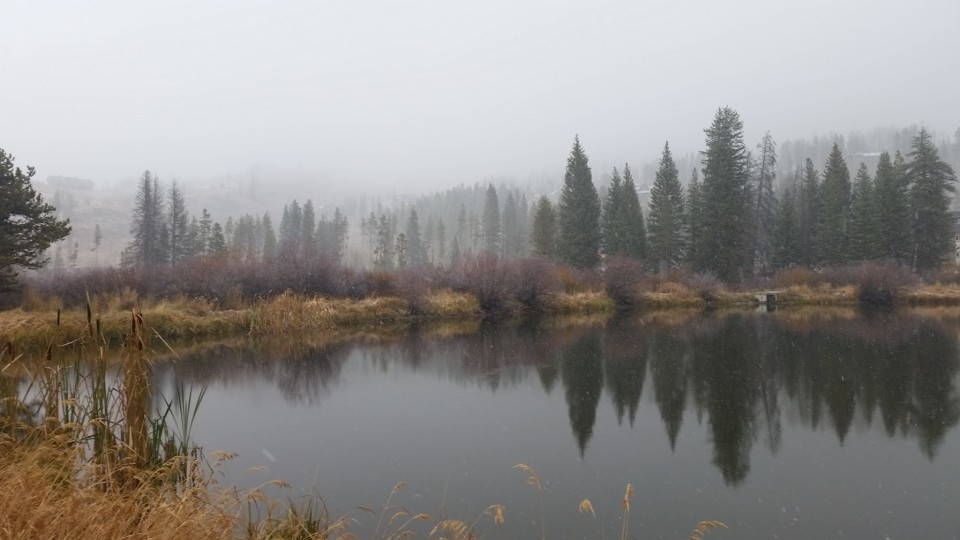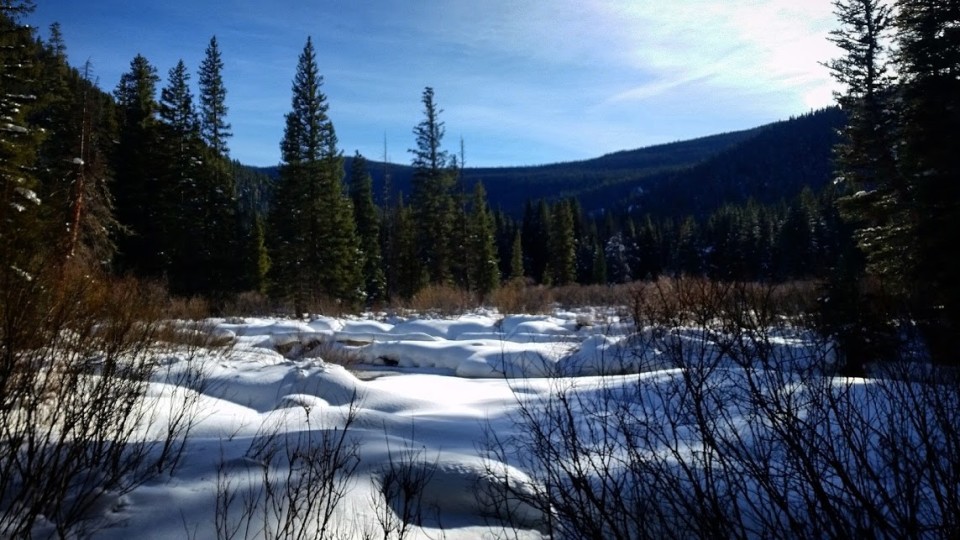I think about pain a lot, not my own pain so much anymore but pain in a general sense, as much as there can be a general sense, in order to figure out how best to help other people to change their own experience of pain in order to live a full, meaningful, valued life right now, even if pain is present.
Why? Because if folks can get can good at living with pain right now, if the pain does resolve they’ll already have the living good part down. And if the pain doesn’t go away, or doesn’t go away completely, they’ll still have the living good part down. Win win.
So I guess I do think about my own pain in the sense that I’m trying to reflect on all the points along the way the last 6 years that my pain changed, that my life changed, for the better. I’m trying to figure out what the keys were, what finally made things click, what my mindset was at the time, what words were said that made the difference, what actions I took.
It’s hard because changing my pain was gradual, there was no moment or day or span of days where it was like, ‘BAM, now I got this thing on lock and I’m good to go, I’ve got got it all figured out!’ And my pain isn’t gone, but it does hibernate for much longer periods of time. And when it is here, it’s not so loud and bothersome, I don’t have to pay so much attention to it.
So how did I get here? I dunno. But I have some ideas.
Pain is complicated and humans are weird. Or is it humans are complicated and pain is weird?
It’s both. Pain is weird and complicated and not fully understood. Humans are weird and complicated and not fully understood. So figuring out pain in humans is weird and complicated and not fully understood. There are no simple explanations, no simple solutions.
The pain experience is unique to each individual but at the same time pain is universal. Pain is pain, no matter it’s genesis. All pain will have a myriad of social, psychological, and biological influences that initiate pain, sustain pain, and change pain.
And to paraphrase Patrick Wall, pain never occurs bereft of context.
For each individual the context will be different, internally and externally. Pain will be affected by each individual’s unique knowledge, thoughts, beliefs, experiences, attitudes, culture, neurology, immunology, hormones, medications, stress levels, education, home life, sleep patterns, hobbies, work, relationships, fears, hopes, diet, expectations, physiology, medical history, fitness, socioeconomic status, goals, and values.
So where the heck do we start?
Who the heck knows for sure. But I do think we have the start of an answer. I have said often that pain science education opened the door to a wealth of strategies that allowed me to change my pain, things like enjoyable movement, being outside, writing, taking nature photos, being more mindful and aware (of both myself and the world around me), being able to talk about my pain experiences, establishing new (and reestablishing old) relationships, acceptance.
I was doing many of those things before I was exposed to pain science education but they were not nearly as effective. I still had fears surrounding movement, I was still incredibly focused on the pain, which allowed little room for anything else, I was still IN pain, pain still ruled my life, it had control, it decided what my day was going to be like.
No magic bullet, but a starting pistol perhaps?
So pain science education isn’t a magic bullet, but it is a starting ground, a jumping off point, a strong and stable foundation upon which to build everything else up upon. It opens the door and let’s some light shine in, relieving some of the darkness we’ve been cowering in feeling lost and afraid, not knowing the way forward.
Pain science education provides us a direction to start walking in. The path forward may not be entirely visible, it may not be a neatly drawn line on a map with a ‘start here, proceed forward, end at your destination’ set of steps, but at least we know the path is there.
I liken this experience to writing, where you don’t really know what’s going to end up on the page (or screen) before you until you write it. We’re all just living out our story, right? Figuring it out as we go along, and because we’re figuring it out, because we’re the ones telling our stories, we have a say in each page, each chapter…but I digress. My point is expressed more eloquently in this quote by E.L. Doctorow:
Writing is like driving at night in the fog. You can only see as far as your headlights, but you can make the whole trip that way.
Pain science education helps us to recognize that we’re in the fog, to be aware of how pain is affecting our lives, and it turns on the headlights so we can start moving forward, however slowly.
If need be we can make the whole trip this way, but if were open to what is beyond that door that pain science education opens for us, I’m convinced we’ll start to see more of the road ahead and the world around us.
And what a wonderful world that can be…
The path forward may not always be clear, but we can still move forward, and it can still be beautiful.
It can be hard to understand what our pain is
It’s not full on sunshine and flowers when we first learn pain science, a flip isn’t switched that illuminates all and makes everything right with the world. That’s because pain science education doesn’t really do a good job of telling us what our pain is.
By that I don’t mean the mechanisms behind how persistent pain can lead to changes the nervous, endocrine, and immune systems that further lead pain to persist or how chronic pain changes are discernible in brain imaging and the like, I mean more the totality of all of the various biological, psychogical, and social factors that are contributing to our pain persisting, that interact and interrelate to one other, that are hard to parcel out and say ‘AHA, there’s the culprit, let’s get him.’
That part takes a bit more work, a bit more soul-searching, a bit more uncomfortable probing into what’s going on within the context of our lives that might be contributing to our pain persisting. A bit more discovering what is going to work to change our pain and our lives for the better. A bit more figuring out how were going to make that happen. (There are resources available for this, including the Protectometer, a handbook for Explain Pain by Lorimer Moseley and David Butler, and the free, open-source Pain Fundamentals workbook by Greg Lehman.)
And that’s ok. That’s good. Because what is going to work is going to be different for everyone based on their values, their goals, their lives, their meaning. Their context. So that part is going to be messier, less clear, less well-defined.
There isn’t one map that will work for everyone but there is a map for everyone.
It is a bit easier to understand what pain isn’t
But though pain science education doesn’t pinpoint what our unique experience of pain is, it does an awesome job of telling us what our pain isn’t. And that’s powerful business right there, folks. It’s knowing what pain isn’t that allows us to figure out the rest of it, to get on with it, to feel safe and secure and confident that we’re on the right path, even if there isn’t a specific route plotted out for us, even if we can’t yet see through the fog where it’s going to take us.
It allows us to be ok with a bit of uncertainty because at least we know what pain isn’t. That we’re not damaged, injured, broken, or degenerating. That we’re not fragile and weak. That pain is not a reflection of the state of our tissues.
And pain science education lets us know that our pain is real. That there is something we can do about it, even if we never know precisely what it is. Lots of somethings.
Pain science education gets us moving in the right direction. By knowing what pain isn’t we can be less fearful, more confident. We can stop waiting for the pain to be gone to get on with living. We can start pursuing the things we want to pursue that give our lives meaning, that give our lives joy and happiness (and heartbreak and sadness, too, but that’s ok because those things are a part of a lived life).
We might still be in a fog when we get started, pain does that to us, but the more we move along that path, the more the fog will clear. The more the fog clears, the more we can see the world around us and our place in it. The more we can see the world around us, the more we can engage in it, the more we can do, the more we can be.
The more. More life, more love, more gratitude, more everything.
Just more.
This pic was taken on a 5+ mile snowshoe with my friend, Laura. There was a time when the furthest I ventured outdoors was my backyard and slow walks around the neighborhood with the dog. But pain science education opened the door to my being able to move without fear, to venture further out, to start exploring and discovering the world around me again.
Thanks for reading my post, folks! As always, I’d love to hear your thoughts, feedback, stories, and experiences. I hope it goes without saying but I’ll say it anyway, my posts are just my thoughts, my experiences, my questions. I don’t have answers, just insights, but I do hope that my reflections can help others find their path forward by pushing back the fog a bit.
Until next time.


